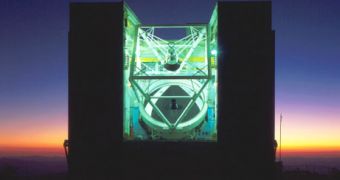The technique, named by astronomers astro-comb, uses a detection method relying on measurements related to the radial velocity of the parent star, or wobble, by making observations on the wavelength shifts determined by the gravitational pull of the planet. By doing so, astronomers will be able to detect planets relatively similar to our own and to determine whether or not it is orbiting its stars in a habitable zone.
Alternatively, the planet could then be probed in order to determine key properties such as surface temperature, or atmospheric pressure - in case it has an atmosphere. Actually, astro-comb is able to detect with higher sensitivity the wobble of a given star, due to its laser system which covers the whole spectrum of optical light, thus creating a perfect ruler for calibration.
"This improved sensitivity is required to find lighter planets like Earth analogs, because such lighter planets pull less strongly on stars," says Harvard Smithsonian Center for Astrophysics, Chih-Hao Li. "The astro-combs is revolutionary, because it will enable astrophysical spectrographs to be much more sensitive to changes in the radial velocity of stars."
Because planets such as the Earth, located in the habitable zone, require more time to complete an orbit around their parent star, astro-comb will need to adjust its atomic clock continuously to make astrophysical spectrographs extremely stable over long periods of time. Li plans to demonstrate that the newly developed astro-comb technique during this summer, by calibrating the facility's spectrograph in order to measure the effects produced by the gravitational pull of dark matter on globular star clusters.
Alternatively to discovering planets and measuring the effects of dark matter, astro-comb will also have the capability to measure the expansion of the universe in real time and then of the early universe. What would have required several decades to complete could now take less than ten years. "With the astro-comb, for the first time humans could be able to use telescopes to see changes in the large-scale structure of the universe in real-time, over the course of a few years," said LI.
"Having the astro-comb is no guarantee that it will be possible to measure the very small wavelength shifts induced by Earth-like planets. Stars are very 'noisy' targets, having hot gas boiling to their surface and rapid rotation and starspots - all of which may quite confound the research. It will be very interesting to see how well it works at the MMT telescope," said University of British Columbia researcher, Gordon Walker.

 14 DAY TRIAL //
14 DAY TRIAL //